Distance Noise
Mixing and blending is not the only way to smooth out rough white noise. When thinking about how to smooth it out, another idea you might have had is to pick some point in each cell and generate values based on that point instead of the whole cell. Then, you could return results based on the sample's location relative to those points instead of just what cell it lands in. This is considered distance noise since it is ultimately always tied to the distance between points.
Cellular Noise
Let's start simple.
For each sample location, first, find it's domain cell, then find the nearest corner of that cell, then generate a value based on that corner.
This is called cellular noise because it ends up creating "cells" of values.
These cells are not to be confused with domain cells from a Partitioner; you can think of them as a desirable side affect of the algorithm
Here's how to do cellular noise in noiz:
use noiz::prelude::*;
use bevy_math::prelude::*;
let noise = Noise::<PerNearestPoint<
SimplexGrid,
EuclideanLength,
Random<UNorm, f32>,
>>::default();
let value: f32 = noise.sample(Vec2::new(1.5, 2.0));Here, PerNearestPoint is told to find the cell of the sample via SimplexGrid,
find the nearest corner of that cell via the distance function EuclideanLength,
and generate a value there via Random<UNorm, f32>.
This produces:
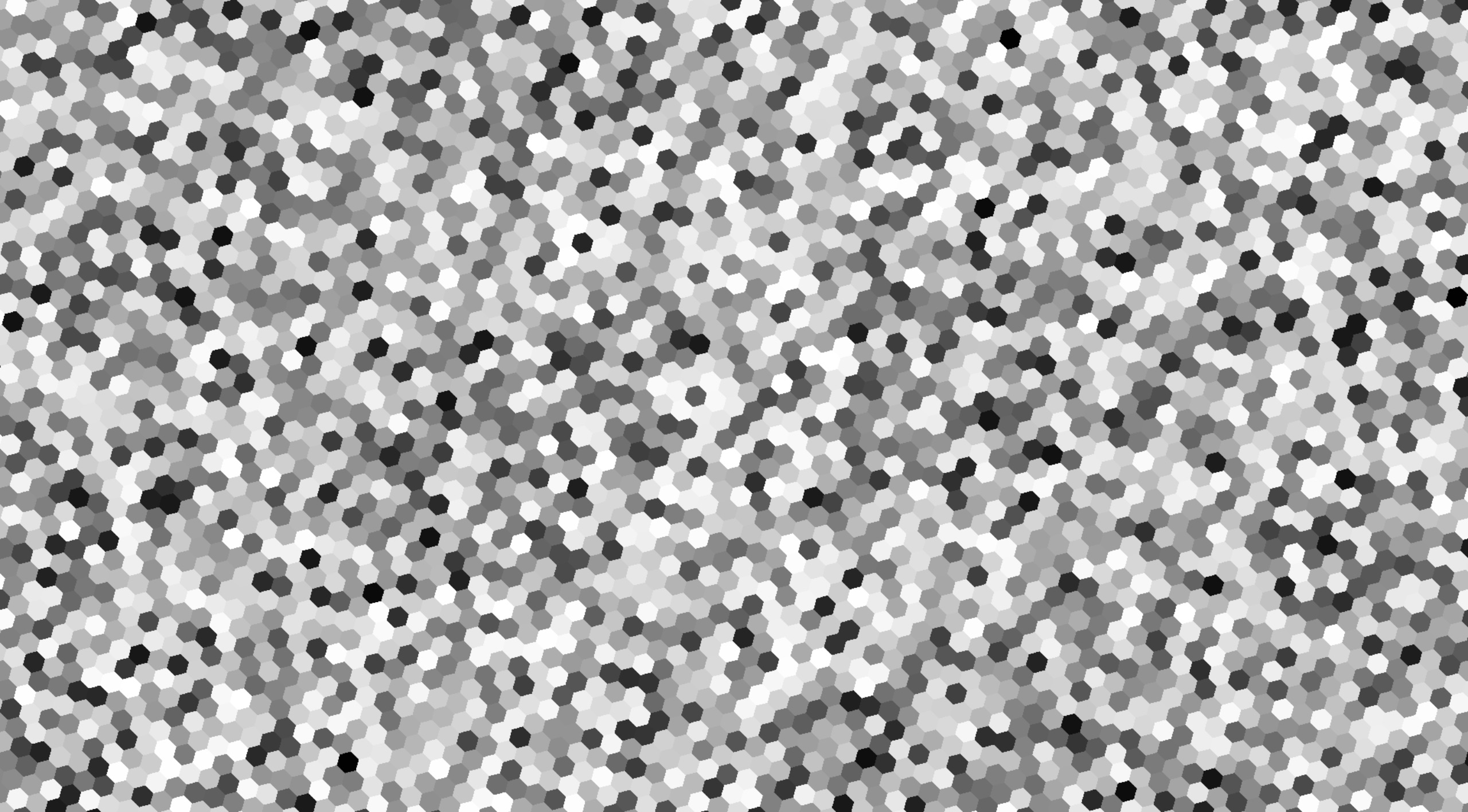
The affect is a little underwhelming with OrthoGrid since it still produces squares, but we're not done here.
Another idea is to give each of those square corners a little nudge in some direction.
This produces a voronoi grid, which is more rigorously defined here.
For our purposes, it just makes the noise much more interesting.
Replacing SimplexGrid with Voronoi produces:
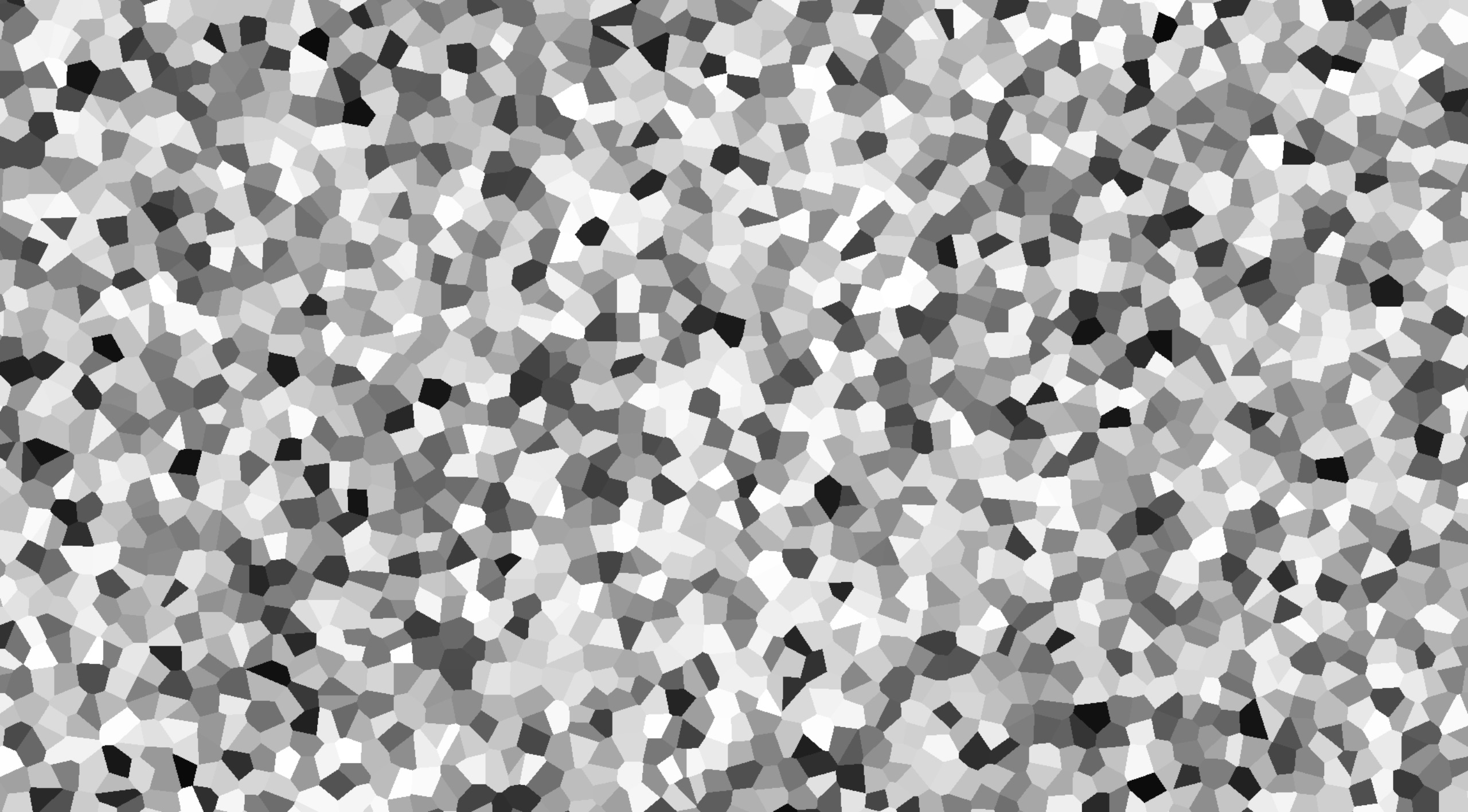
Cool! See the docs for more configuration here, like how much to nudge each point. This is the typical cellular noise. If you've heard of cellular noise before, this is probably what it referred to.
There's lot's more than just EuclideanLength, too.
Here's a look at the shapes they produce in a distance field,
the general shape in which the distance between two points change.
EuclideanLength: produces circlesEuclideanSqrdLength: produces circles with non-linear scalingManhattanLength: produce diamondsHybridLength: combinesEuclideanLengthandManhattanLength, producing diagonal shapesChebyshevLength: produce squaresMinikowskiLength: produce concave diamonds, like stars
Here's a look at using ManhattanLength:
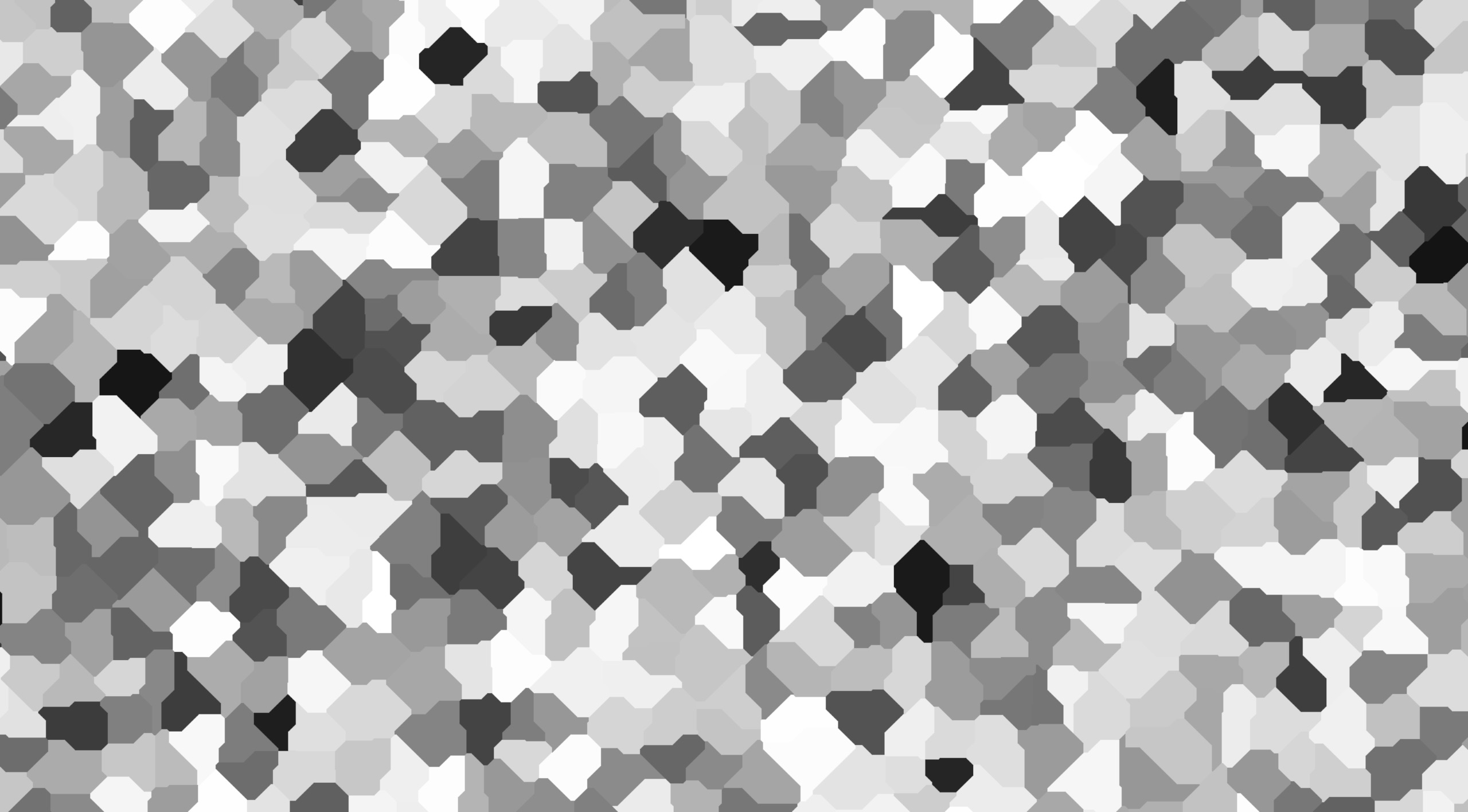
Worley Noise
In cellular noise, each cell is flat since it only comes from the nearest cell point itself. So, another approach is to calculate the result based on the distances themselves rather that the point at the closest distance. This is called worley noise. Here's how to do it in noiz:
use noiz::prelude::*;
use bevy_math::prelude::*;
let noise = Noise::<PerCellPointDistances<
Voronoi,
EuclideanLength,
WorleyLeastDistance,
>>::default();
let value: f32 = noise.sample(Vec2::new(1.5, 2.0));Here, PerCellPointDistances is told to calculate noise based on the sample location's distance as defined by EuclideanLength to nearby points from the Voronoi partitioner,
where those distances are turned into a result via WorleyLeastDistance.
WorleyLeastDistance is a WorleyMode that does exactly what it says: returns the least distance, between 0 and 1 of course.
Here's what that looks like:
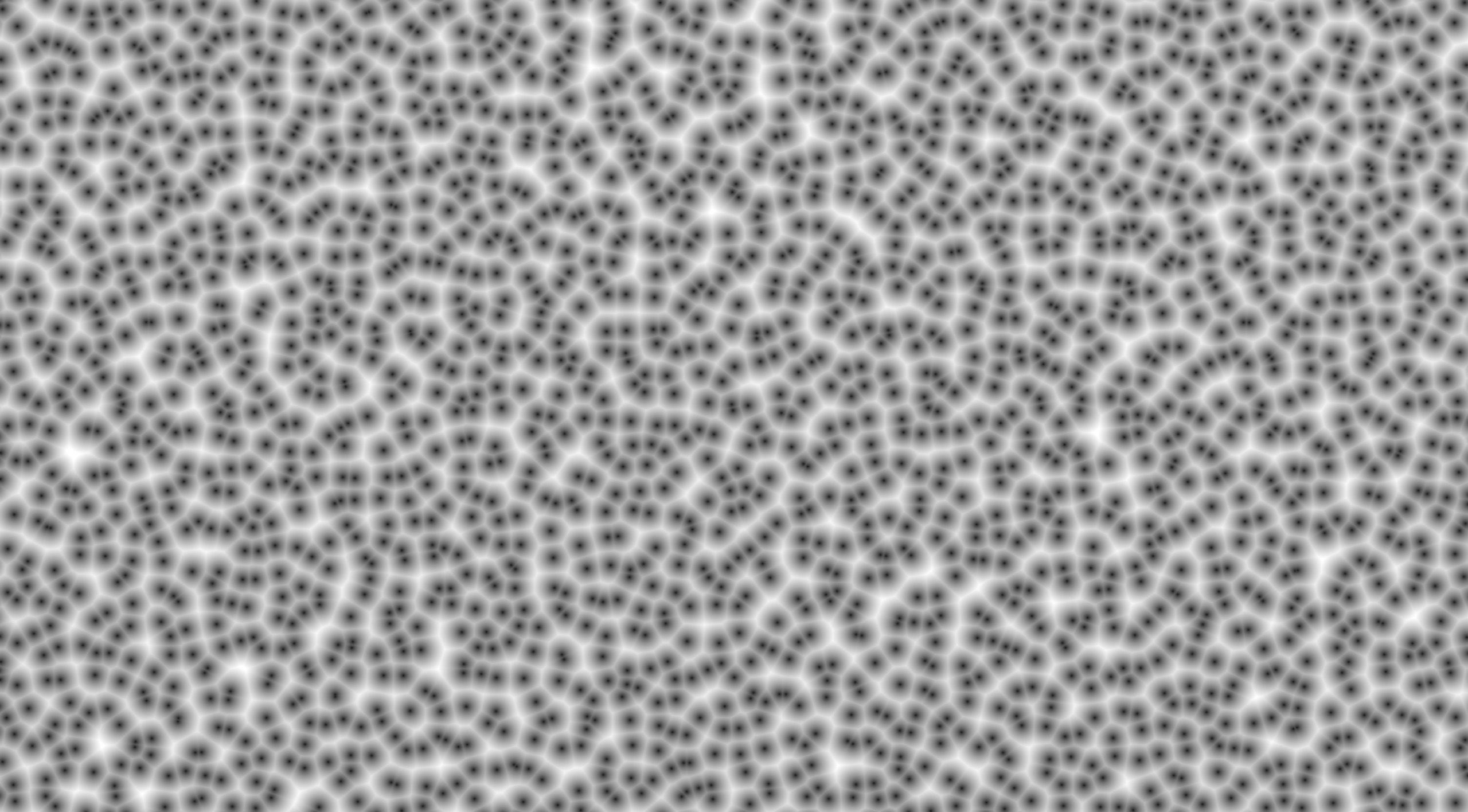
This is traditional worley noise.
If you've heard of it before, this is probably what it meant.
But WorleyLeastDistance is not the only kind of worley noise.
Here's some more, all using EuclideanLength.
WorleySmoothMin<CubicSMin>: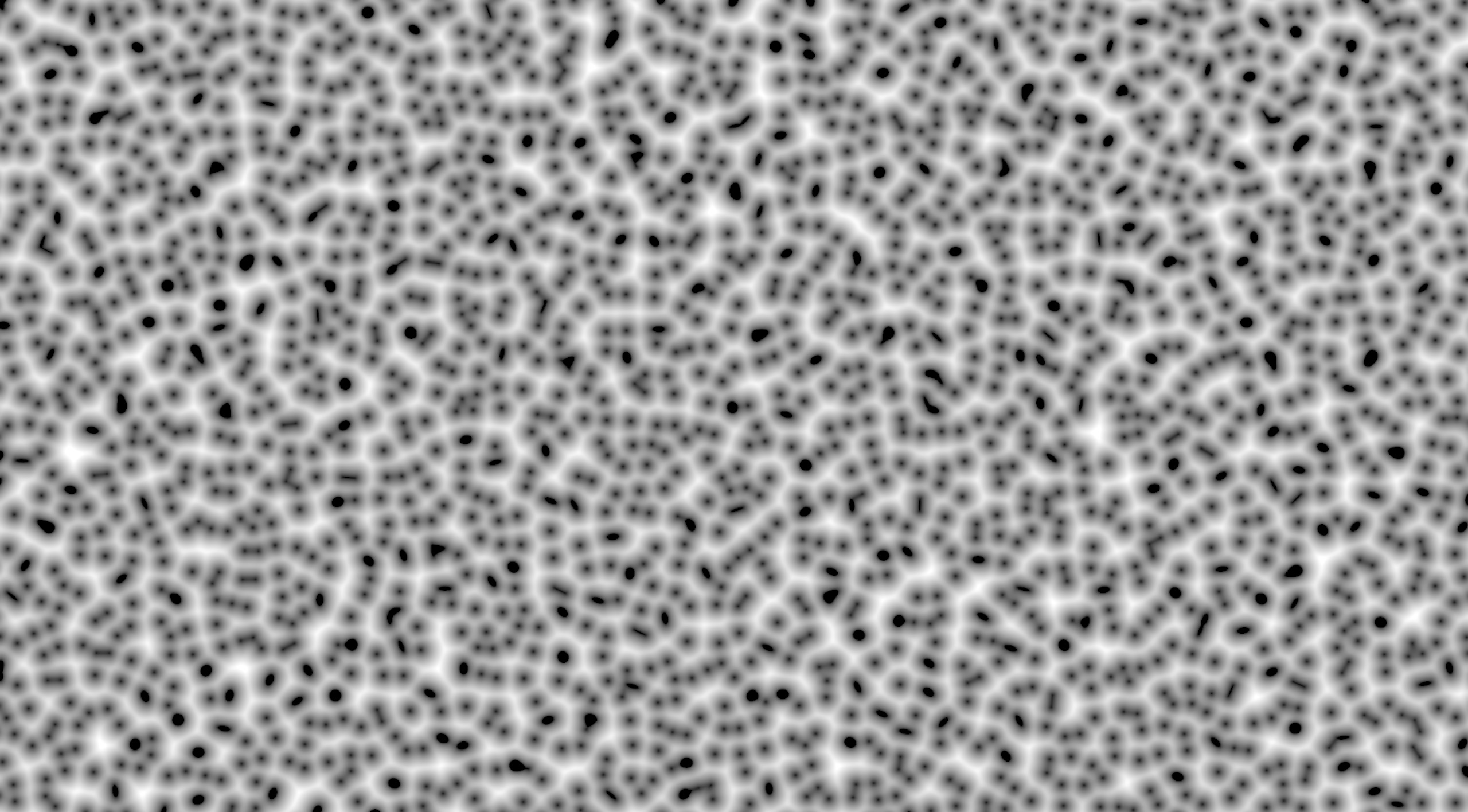 There are other smooth min functions besides
There are other smooth min functions besides CubicSMin, but only this one is included in noiz. (But you can always make your own!) This is very similar toWorleyLeastDistance, but instead of retaining boarders between cells, this smooths those out completely, instead creating "pit" artifacts.WorleyAverage:
WorleyDifference: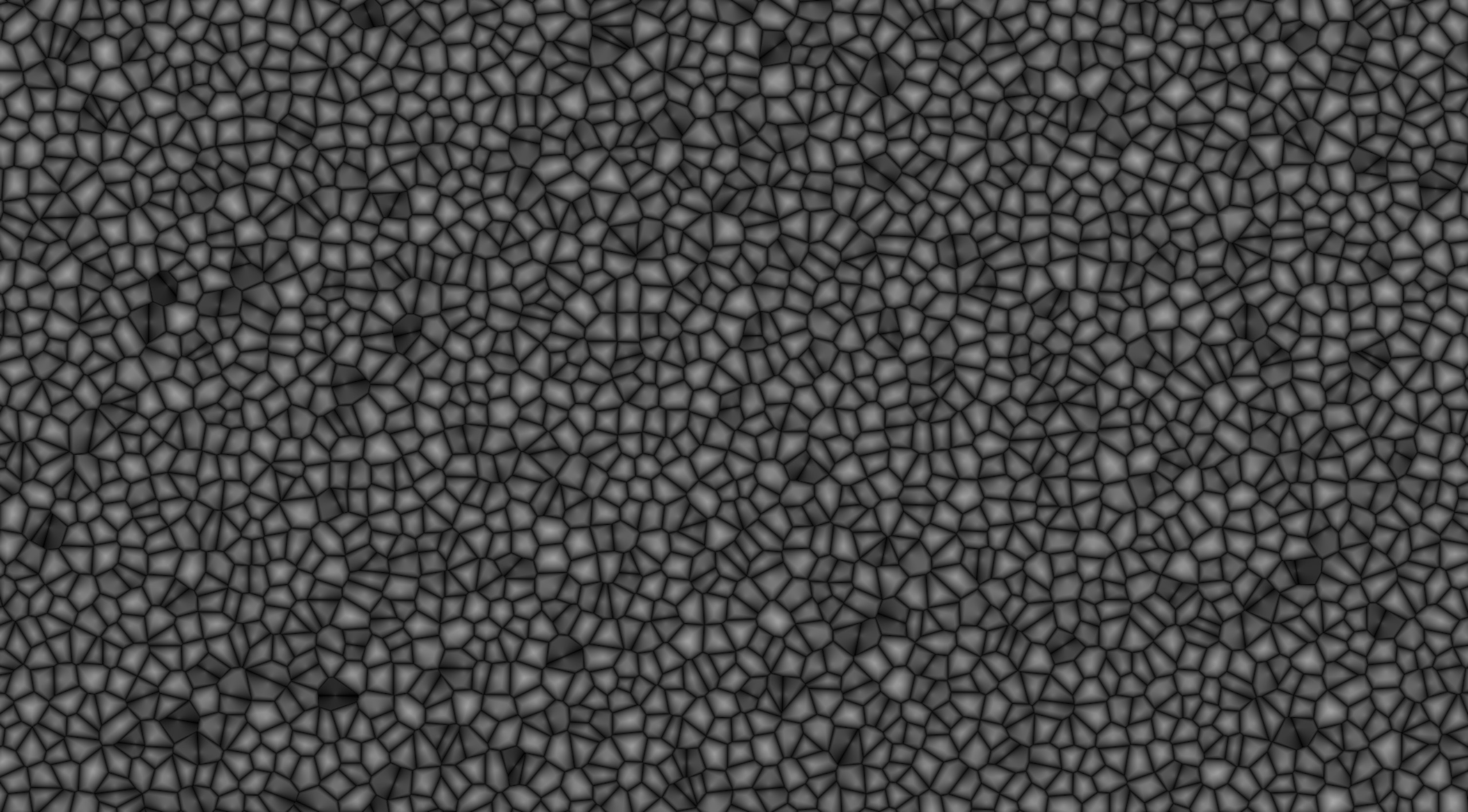
WorleyRatio: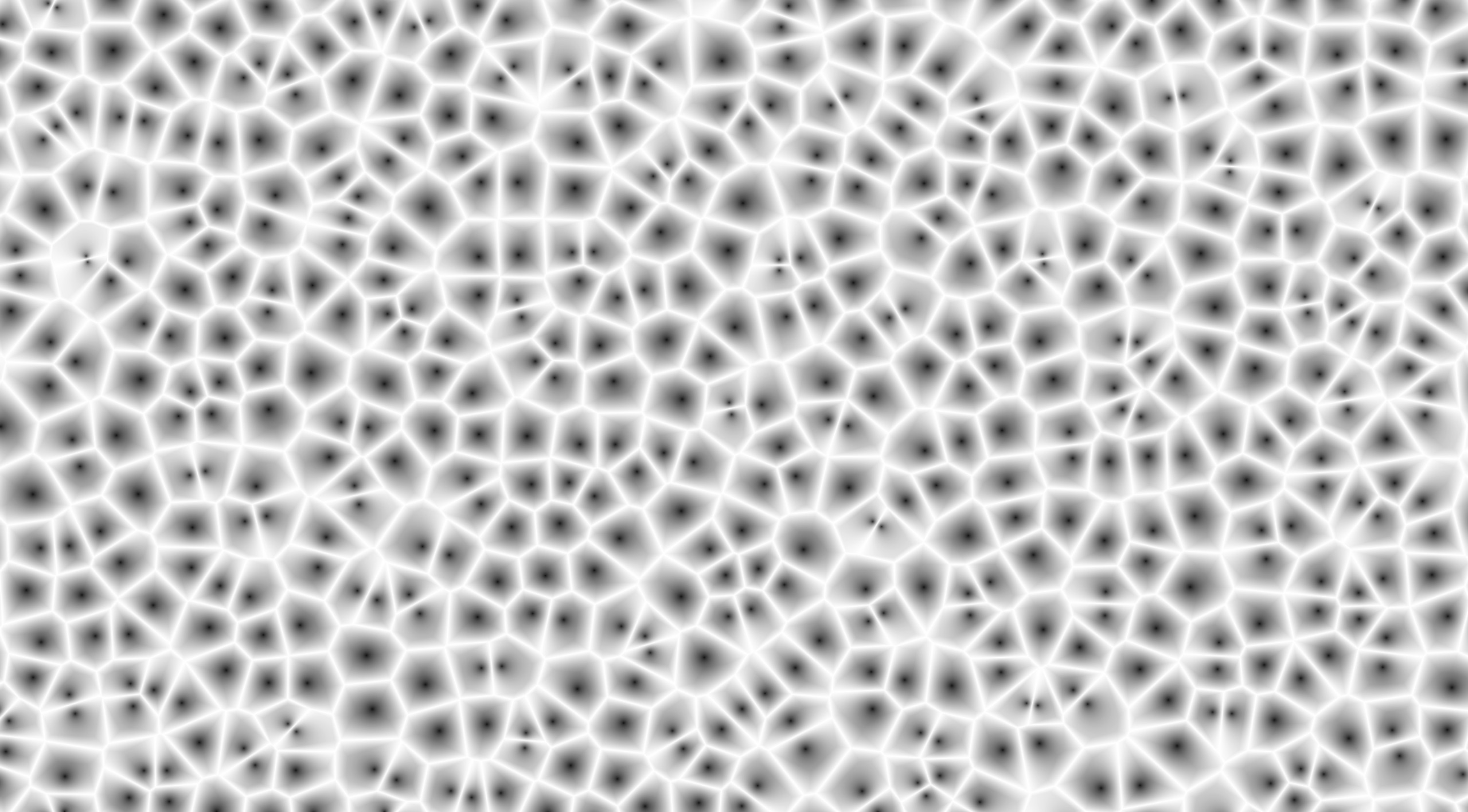
WorleyProduct: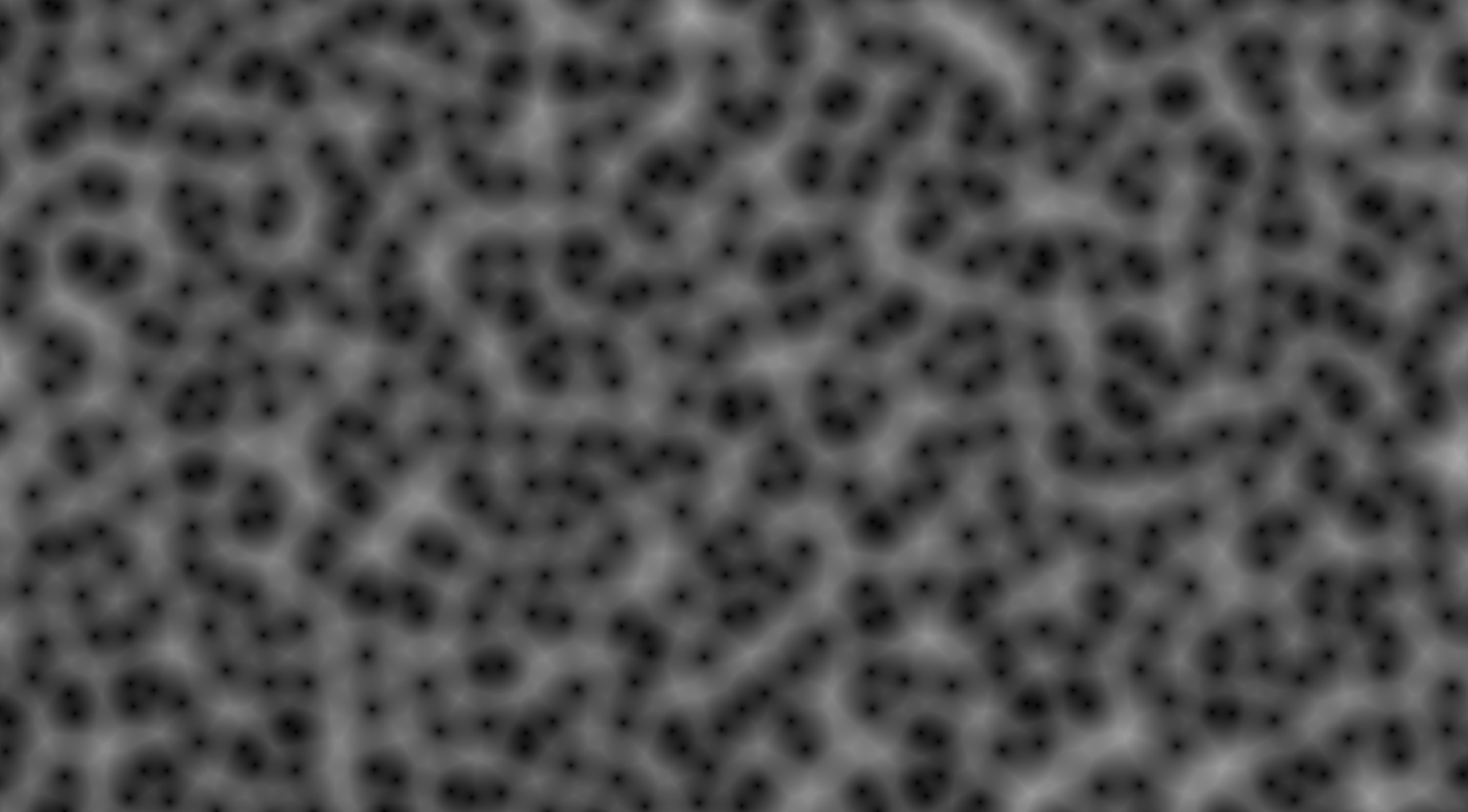
WorleySecondLeastDistance: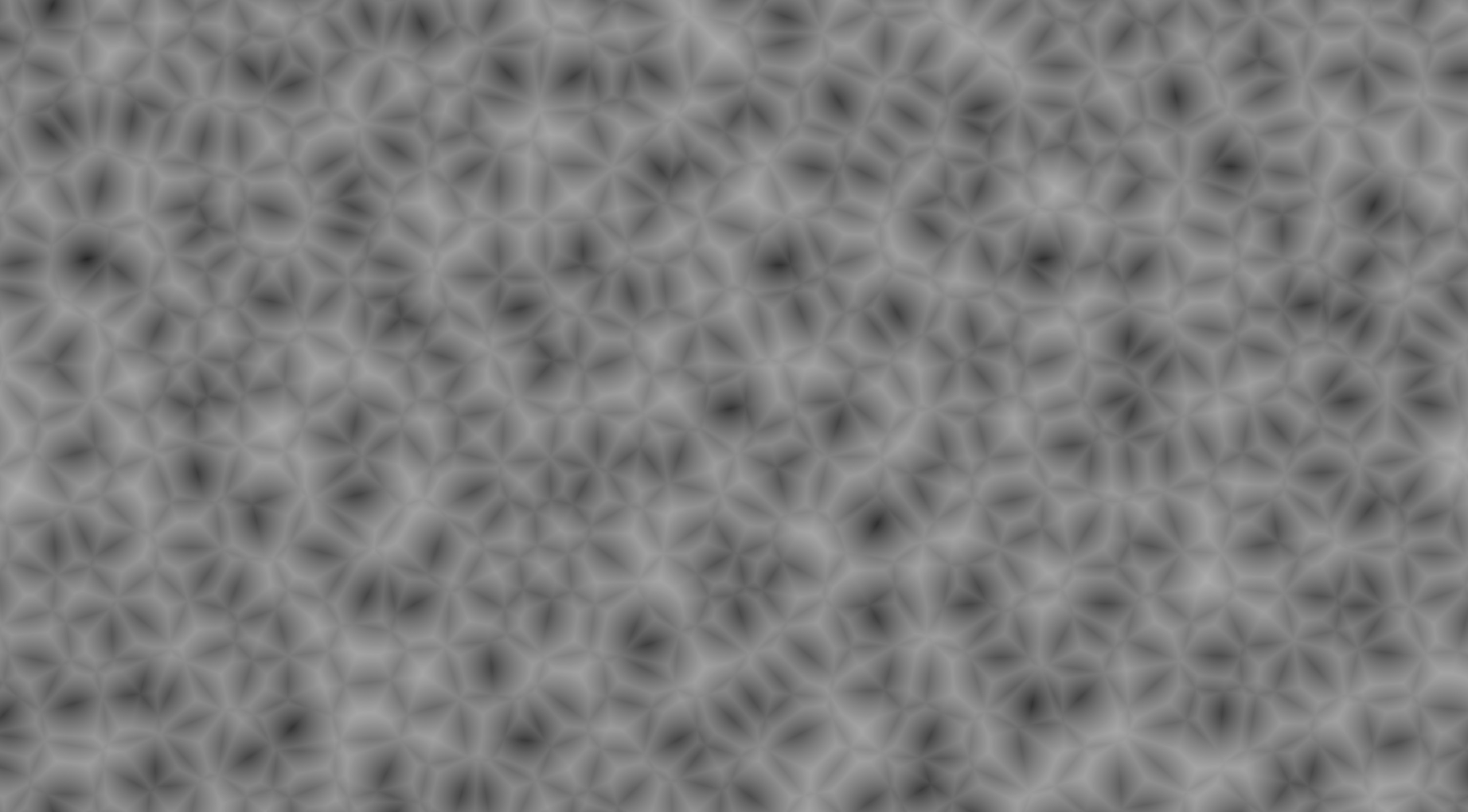
One other option is to calculate the distance to the edge between the voronoi cells. This is implemented slightly differently:
use noiz::prelude::*;
use bevy_math::prelude::*;
let noise = Noise::<DistanceToEdge<Voronoi>>::default();
let value: f32 = noise.sample(Vec2::new(1.5, 2.0));It produces this: 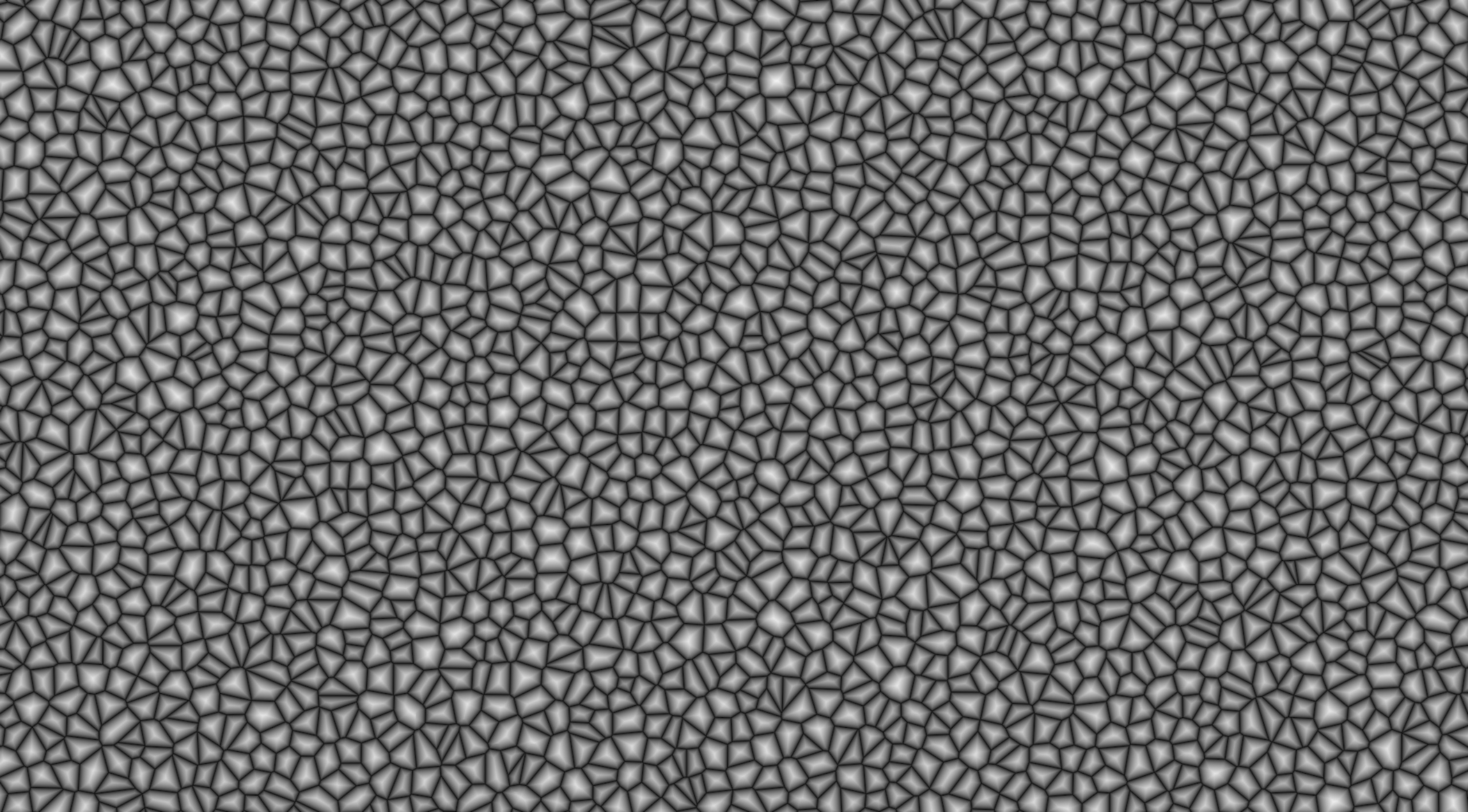
There's not nearly enough space to give all length-mode combinations, but here's one more:
 This is
This is WorleyAverage with ChebyshevLength.
Voronoi Blending
Of course, you can still blend over Voronoi.
Here's one example:
use noiz::prelude::*;
use bevy_math::prelude::*;
let noise = Noise::<BlendCellValues<
Voronoi,
SimplecticBlend,
Random<UNorm, f32>,
>>::default();
let value: f32 = noise.sample(Vec2::new(1.5, 2.0));This makes: 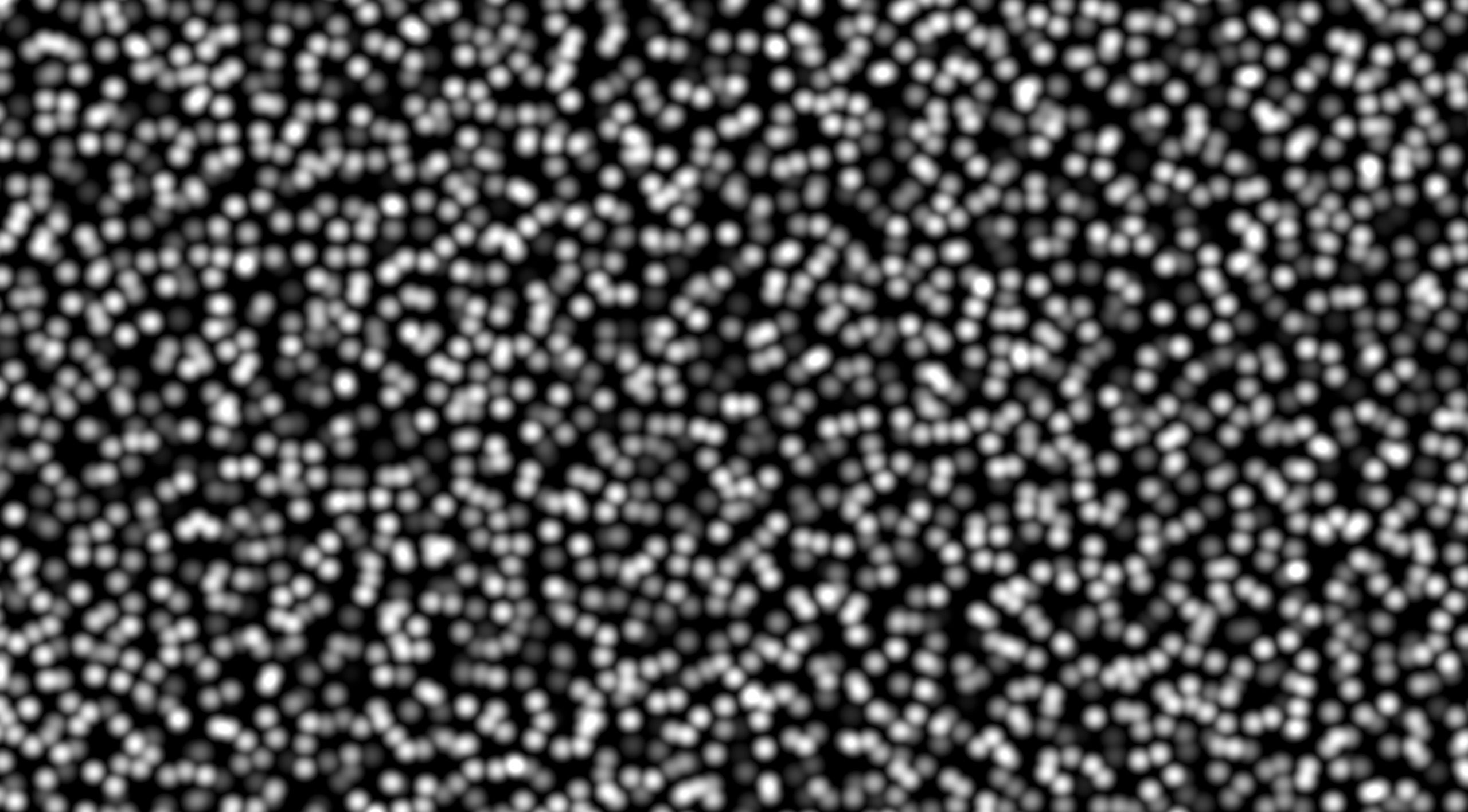
There's also DistanceBlend<T>, where T is a length function as an alternative to SimplecticBlend.
Using DistanceBlend<ManhattanLength> for example makes:

You can also blend gradients:
use noiz::prelude::*;
use bevy_math::prelude::*;
let noise = Noise::<BlendCellGradients<
Voronoi,
SimplecticBlend,
QuickGradients,
>>::default();
let value: f32 = noise.sample(Vec2::new(1.5, 2.0));This produces: 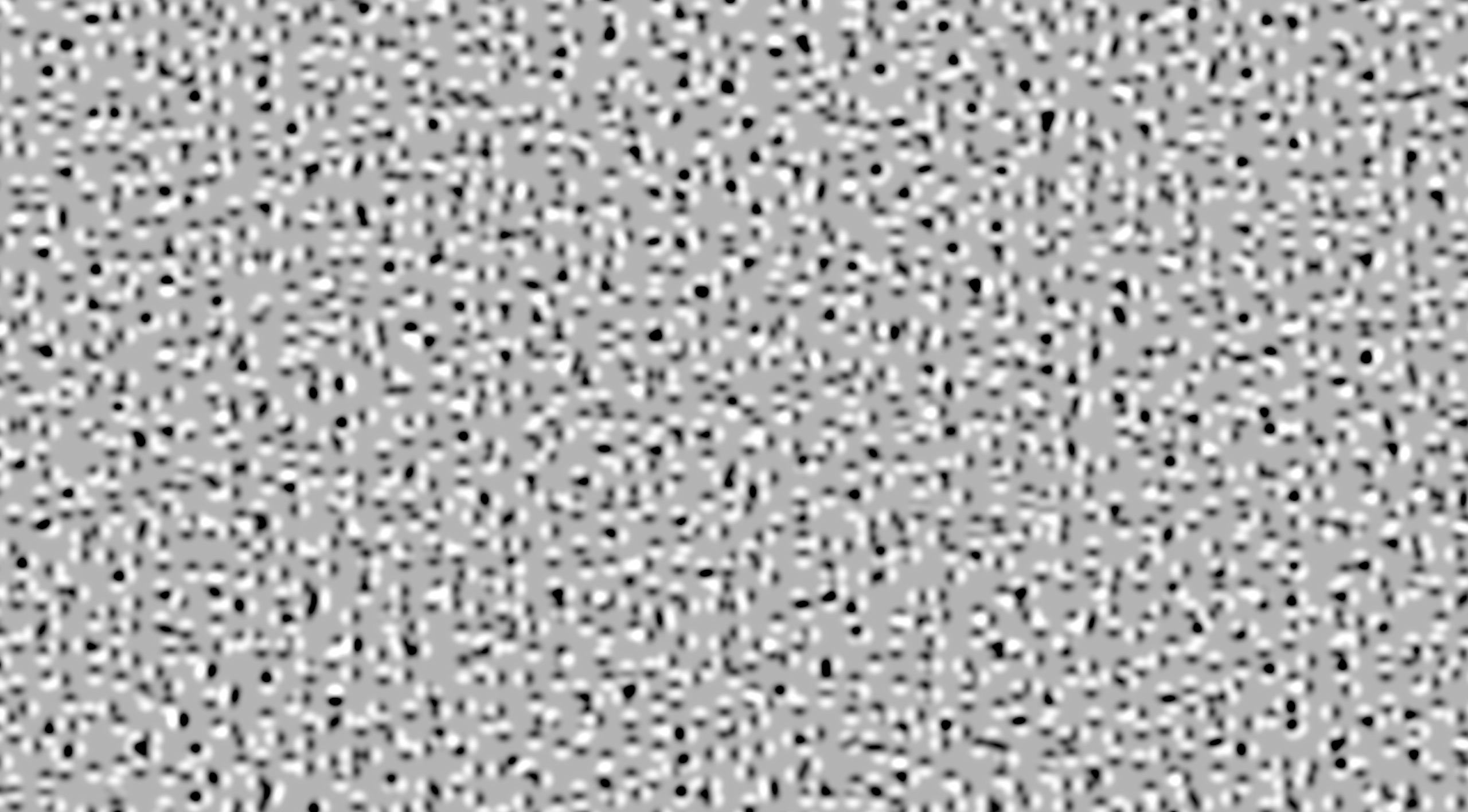 Pretty cool!
Pretty cool!
For more information about how voronoi and worley noise works (and noise in general), check out this website.